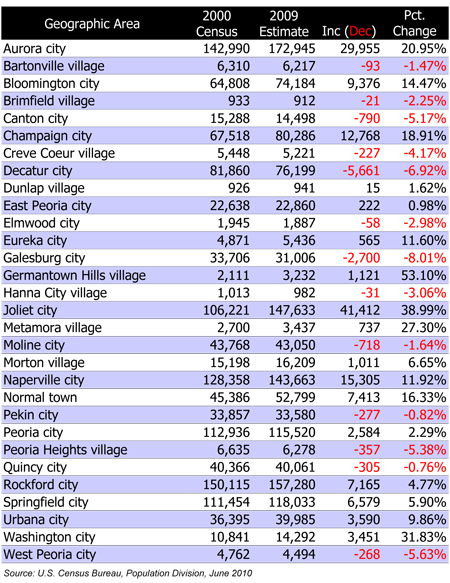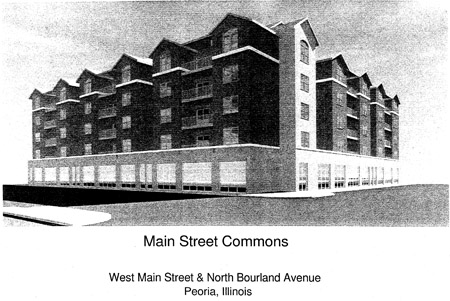The City of Washington (Illinois) outpaced the City of Peoria in population growth over the last decade not just in percentages, but in real numbers.
According to U.S. Census Bureau estimates, Washington has grown by 3,451 residents (from 10,841 to 14,292) between 2000 and 2009*, an increase of 31.83%. Peoria increased by 2,584 residents (from 112,936 to 115,520) — an increase of 2.29% — over the same period.
On a percentage basis, the largest population growth near Peoria is in Germantown Hills. The village grew by 1,121 residents (from 2,111 to 3,232) — a whopping 53.1%.
Other surrounding communities that saw population growth include Morton, Metamora, Eureka, East Peoria, and Dunlap. Several towns and villages lost population, including Bartonville, West Peoria, Pekin, Peoria Heights, and Canton. West Peoria and Peoria Heights lost the most residents percentage-wise in the immediate area: -5.63% and -5.38%, respectively.
Here’s a breakdown of population changes in several communities of interest, in alphabetical order:

You may notice that typically communities on the east side of the river fared better than communities on the west side. The county statistics bear that out. Peoria County grew by 2,383 residents, or 1.3%, between 2000 and 2009. But Tazewell County grew by 3,981 (3.1%) and Woodford County by 3,393 (9.57%). Combined, Tazewell and Woodford counties grew by 7,374 residents (4.5%), more than three times as much as Peoria county during the same time period.
* Note: In all calculations, I compare actual April 2000 U.S. Census Population Data to recently released June 2009 Population Estimates.

 It was
It was